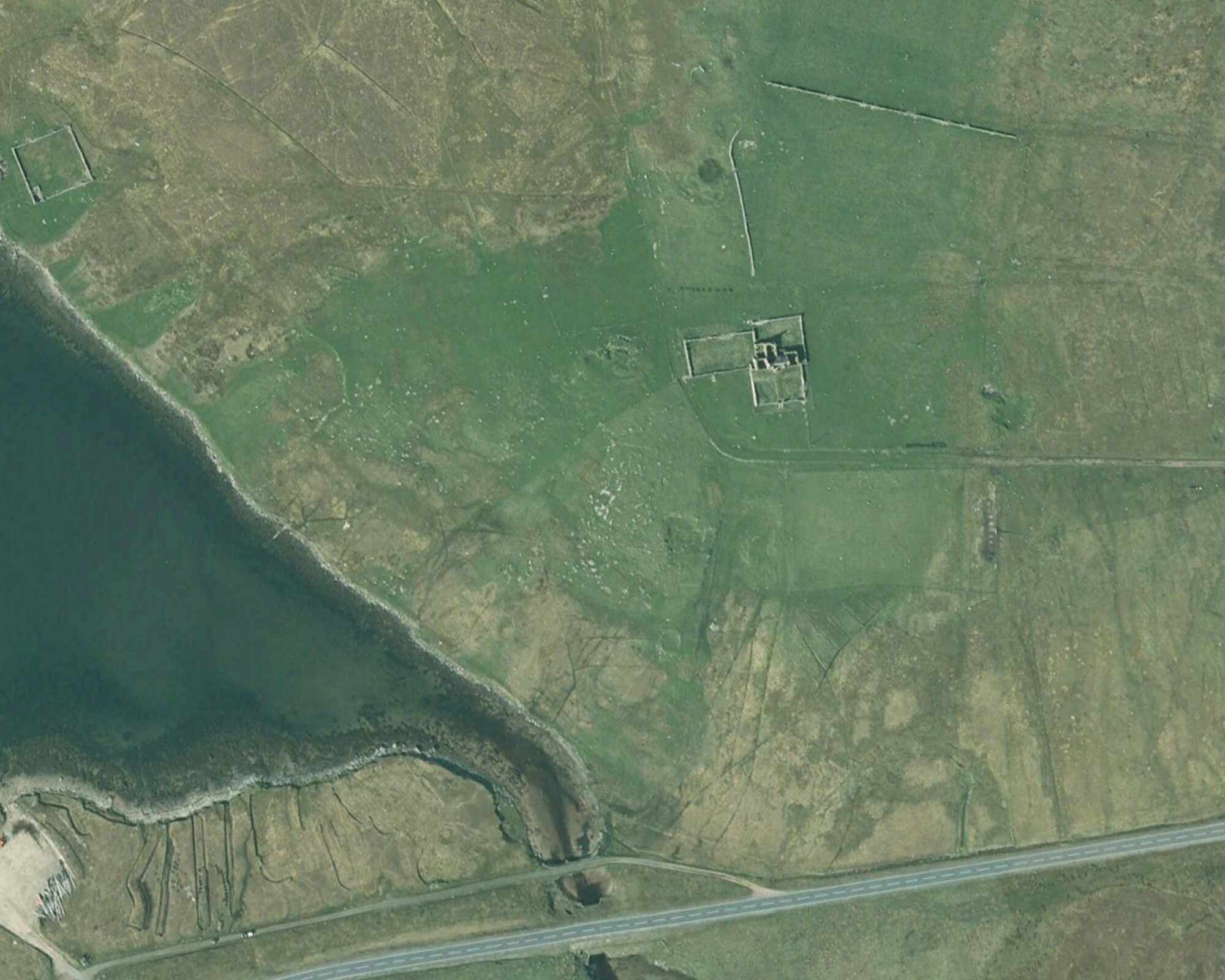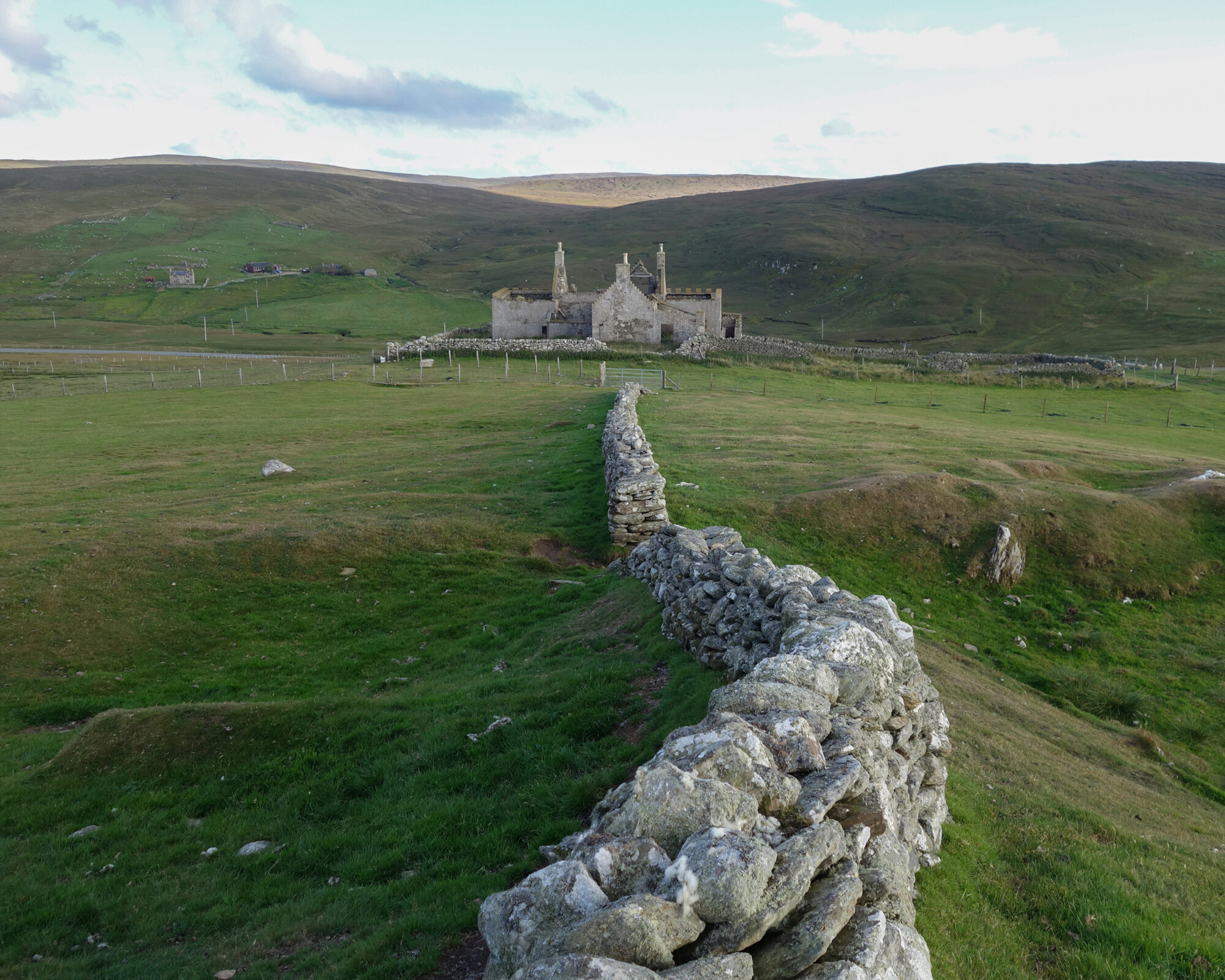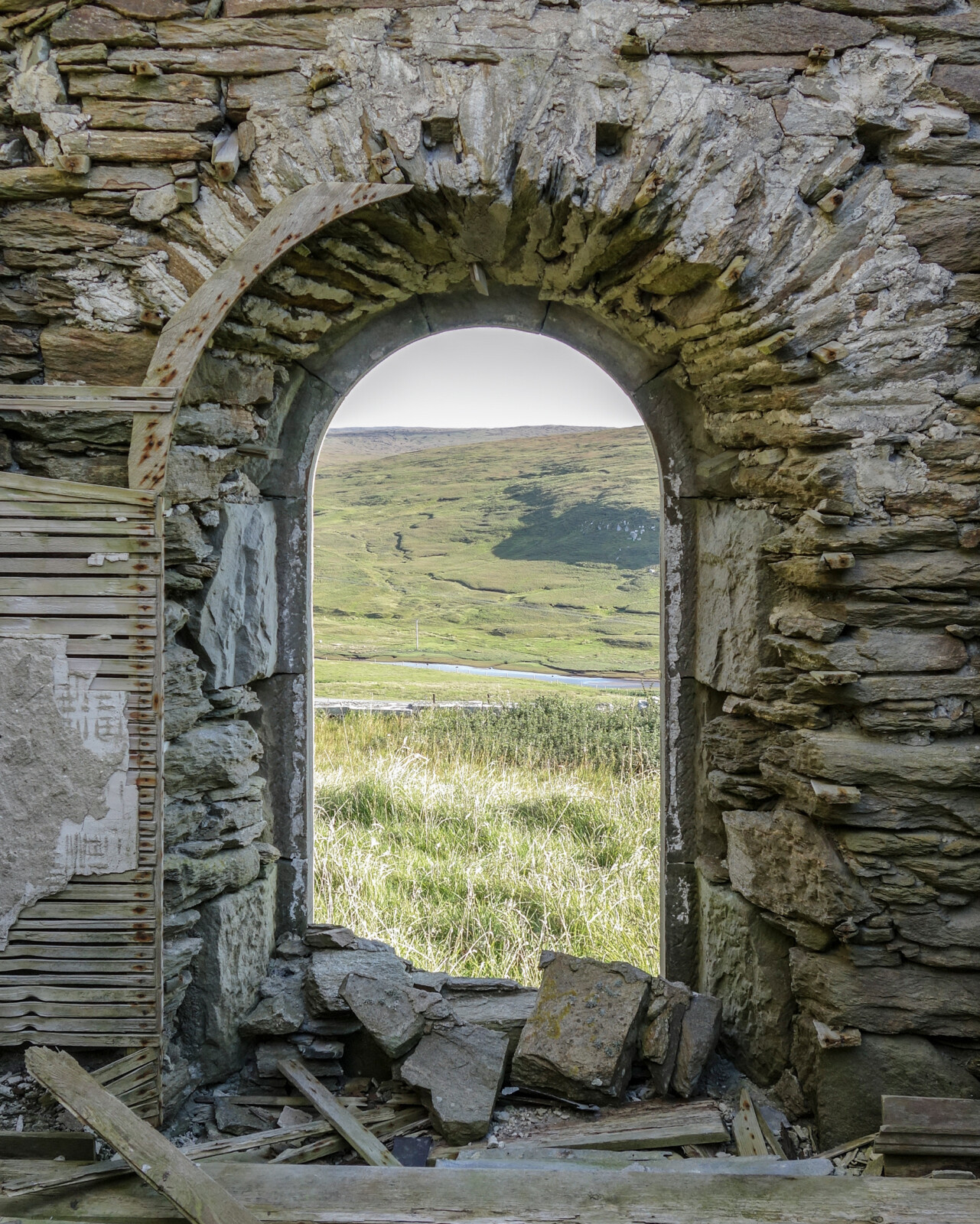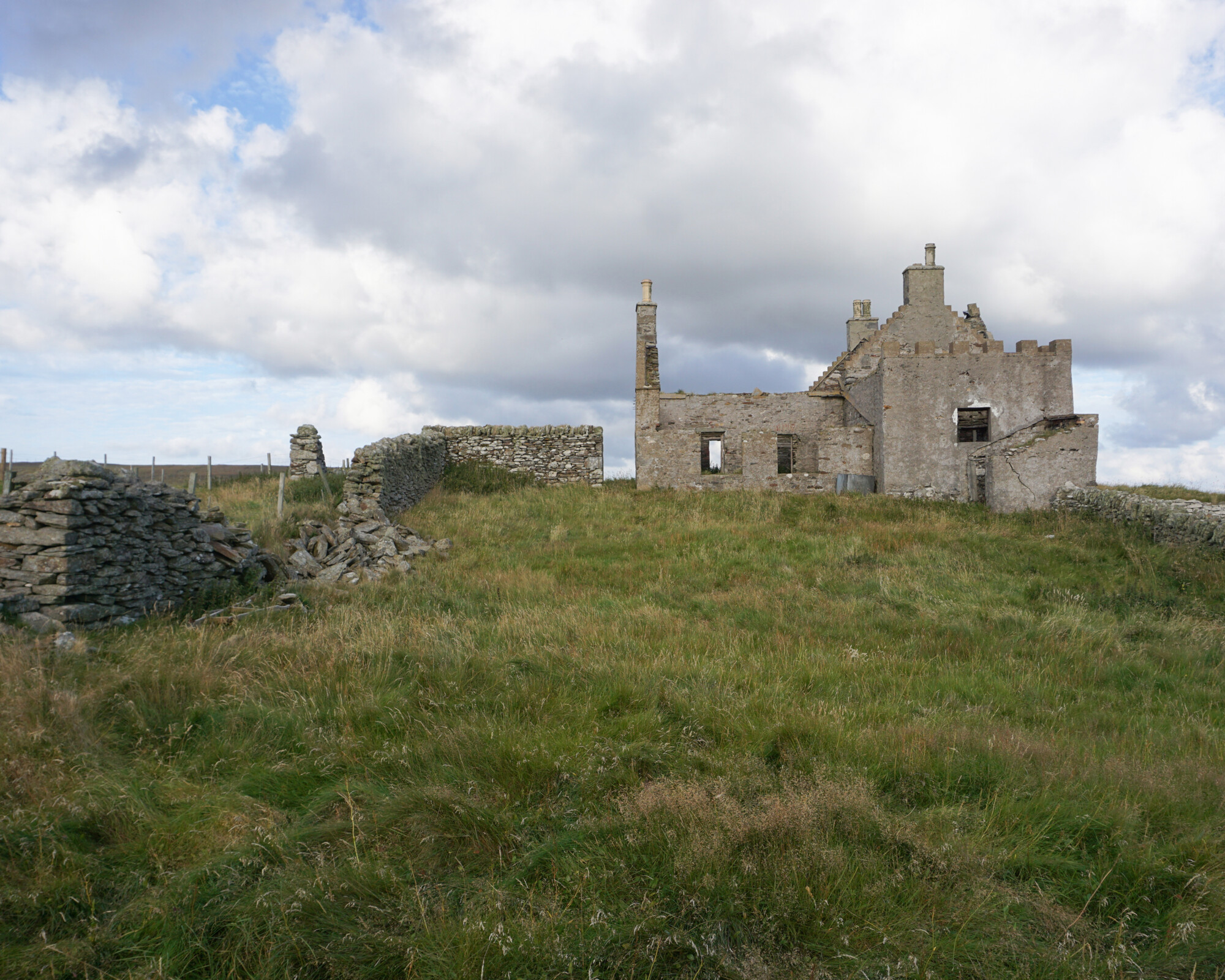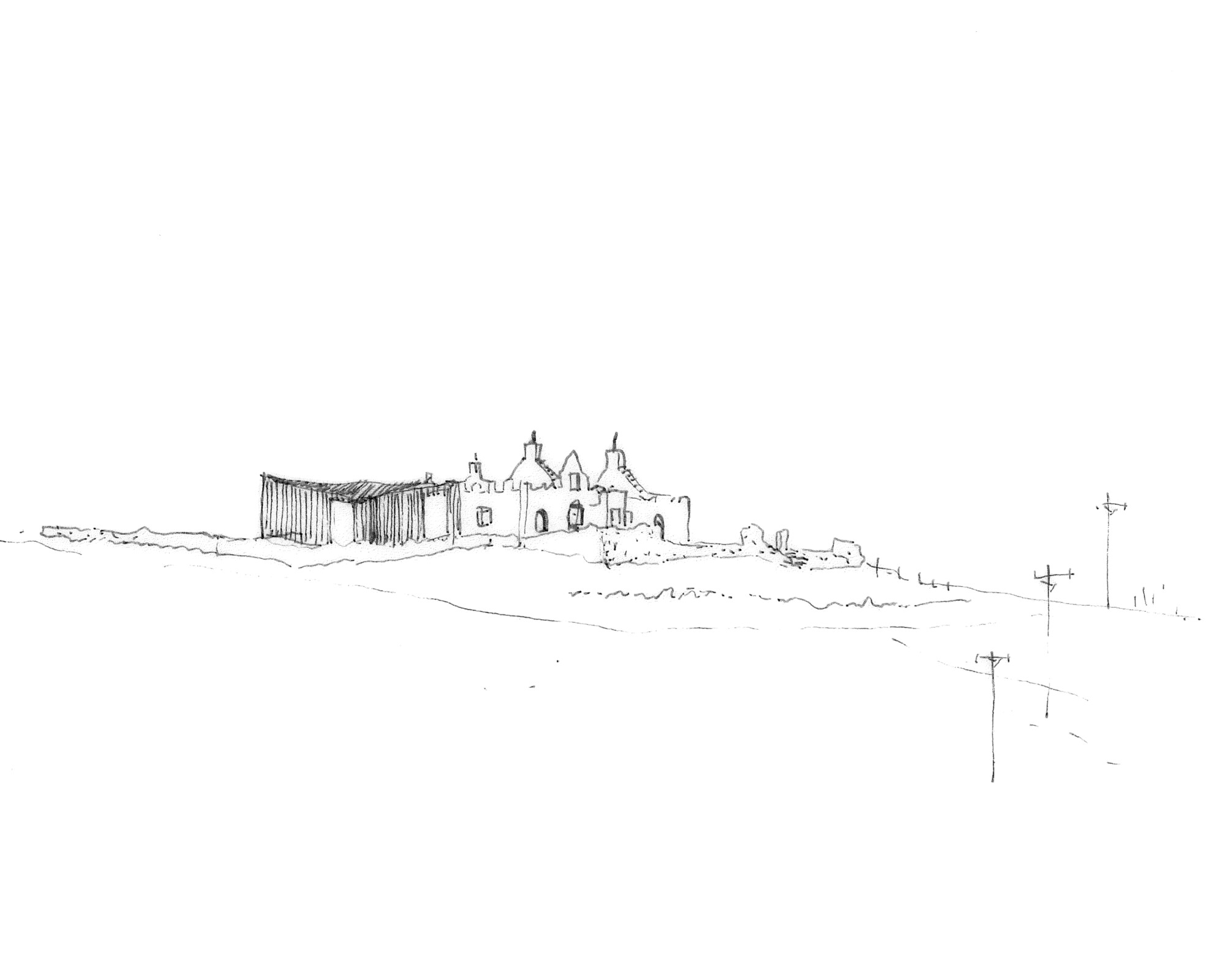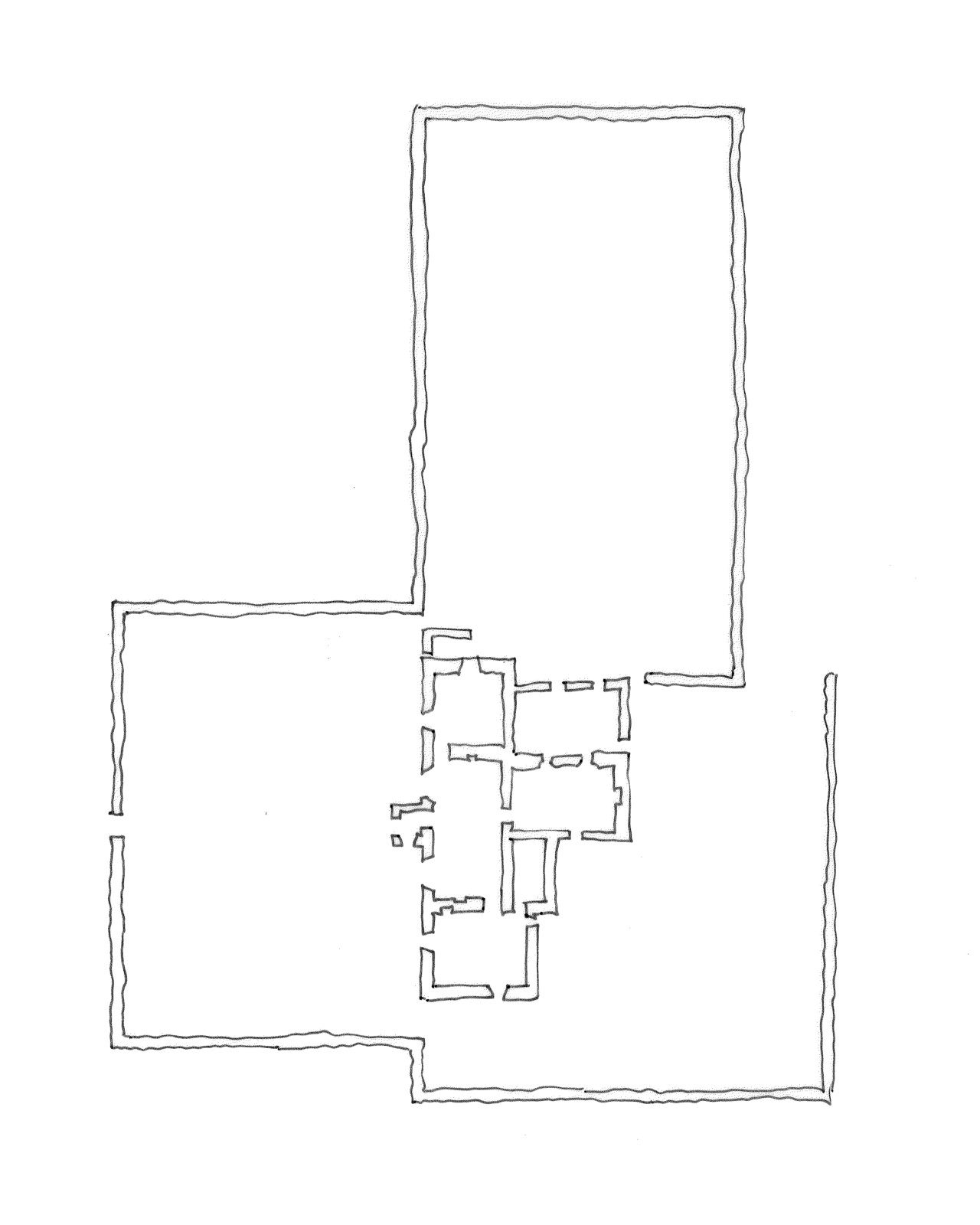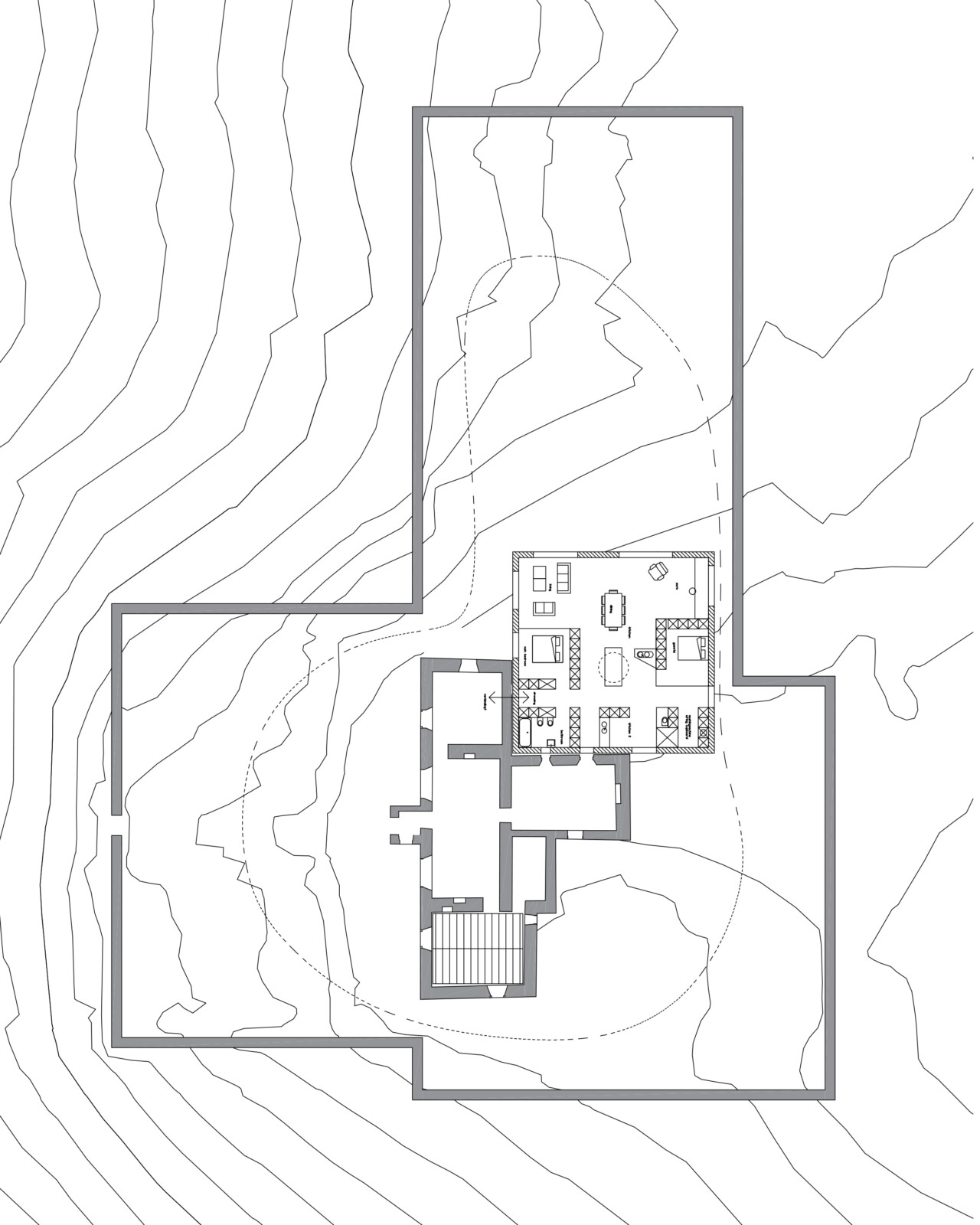This is a short story. Short stories are concentrated reflections which give space to the questions, dialogues and encounters influencing our work.
‘Windhouse’, was our design for the renovation of a ‘haunted’ house and its surrounding ruins on the island of Yell, Shetland Islands, Scotland, 2018-19.
It all started with a phone call about a house on a hill.
It is not often that a project like Windhouse lands on our desks. Seemingly out of nowhere, an owner of a rural ruin of a haunted house in the Shetland Islands contacted our office. She had seen an image of our earliest projects, Linq (an office in Sint-Denijs-Westrem, BE) in a magazine and felt compelled to approach us after a collaboration with a British office to realise a similar concept had fallen apart.
In speaking with her further, we soon came to realise we’d never encountered a prospective client like this before. With all decisions, emotional and practical, guided by her connections to the spiritual world and the predictions of a fortune teller, the owner felt a heavy responsibility to the spirits of the haunted house. Through the restoration of the site, she sought to bring the spirits to rest.
With this incredible, once in a lifetime brief, we were compelled to pursue this strange and otherworldly opportunity.
Two Flemish architects in the Shetlands
We came to Yell to discover this foreign site, a world away from the familiarity of our usual Flemish context. The landscape around Windhouse was so fragile; a thin layer covering the rocks of the hill. Full of scars and traces of human activity over the ages. The first settlements on the hill were neolithic; other remains date back to the Vikings. The ruins of the house date back to the 1700s.
We came to learn the extent of the house’s violent history. We were told folklorish stories of a cruel landlord and people who met unfortunate ends in the house. As a known site of human burials, an intensive archaeological dig was required in the garden of the house before any building work was to begin.
With the incredible costs involved in restoring a ruin like Windhouse to its former state, we wanted to find a way to bring new life to the hill while acknowledging and respecting the slow return of these ruins to the landscape.
A haunting project
We had no interest in reviving the ruins of Windhouse to a past point in its history. Instead, we offered to bring peace to the existing house not by dressing it up, but by guiding its gentle return to the earth.
The new house we designed was a contemporary addition, touching Windhouse in its southeast corner, offering views into its ruinous landscape-rooms. These ‘rooms’ of Windhouse could be programmed with different functions, like a netted space for cats, a shed for the owner’s pony or a walled garden, offering protection from the brisk Shetland winds.
This experience was our first confrontation with a client who had an entirely different idea of how to live, causing us to rethink all conventions. As the project and its financial plan progressed further into the spiritual realm, it became increasingly clear that we wouldn’t be able to continue with the project.
For our part, the project exists as a ghost in our archive and in our model room. Our design for a revived Windhouse remains a sketchy figure on the hillside.

